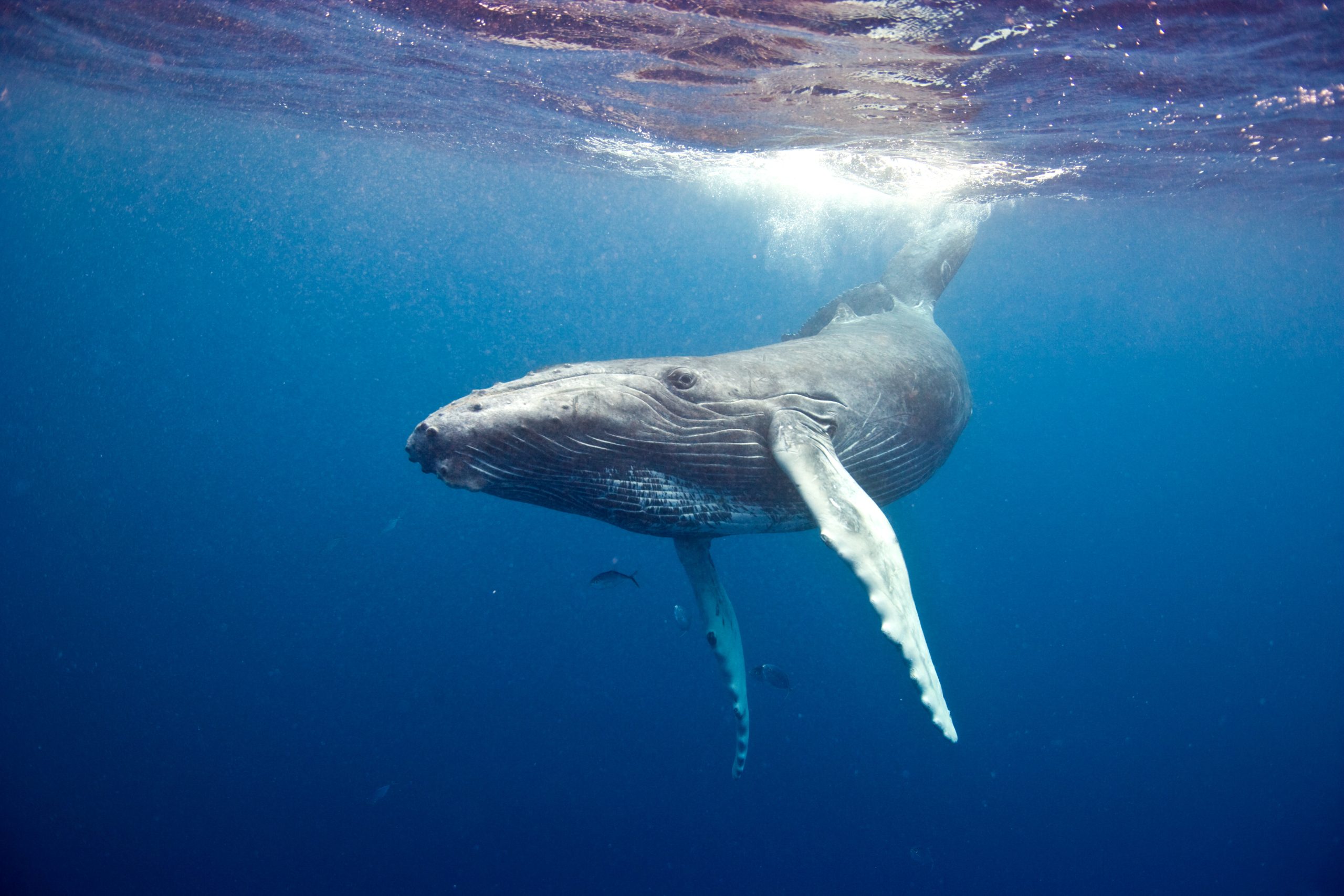Did You Know? 20 Cool Facts to Impress Your Friends

Have you ever found yourself in a conversation that seems to be going nowhere? Sharing interesting and little-known facts can be a game-changer, turning mundane chats into captivating discussions. Knowing a variety of fascinating tidbits can not only entertain but also educate, sparking curiosity and wonder about the world we live in. Whether you’re at a social gathering, chatting with friends, or trying to break the ice at a meeting, having some cool facts at your disposal can make you the star of the conversation.
This blog post features 20 amazing facts that are sure to impress your friends and make any interaction more engaging and enjoyable. Let’s dive into these snippets of knowledge and discover how fun learning can be!
Cool Fact 1: The Heart of a Blue Whale
The heart of a blue whale is truly a marvel of nature, exemplifying the sheer scale and power of the largest animal on Earth. This immense organ can weigh as much as 1,300 pounds (590 kilograms) and is roughly the size of a small car, such as a Mini Cooper. To put it into perspective, a human could easily crawl through the blue whale’s aorta, the major blood vessel away from the heart.
Despite its colossal size, the blue whale’s heart beats only 8 to 10 times per minute when the animal is submerged in the ocean’s depths. This slow, powerful beat helps pump blood through the whale’s enormous body, ensuring that every single part, from its massive tail flukes to its gaping mouth, remains supplied with essential nutrients and oxygen.
Additionally, the blue whale’s heart has a remarkable ability to adapt to the pressures of diving to great depths, slowing down to conserve oxygen and manage buoyancy, showcasing the extraordinary physiology of these gentle giants of the sea.
Cool Fact 2: The Speed of Light
The speed of light is one of the most fascinating constants in the universe, traveling at an astonishing 299,792,458 meters per second (approximately 186,282 miles per second) in a vacuum. Light travels in waves and can move through the vacuum of space, unlike sound, which needs a medium like air or water.
This rapid pace means light can circle the Earth about 7.5 times in just one second! To put this into perspective, the light from the Sun, about 93 million miles away, takes just over eight minutes to reach us on Earth. This incredible speed is also why we measure astronomical distances in light-years, representing the distance that light can travel in one year.
Understanding the speed of light helps us comprehend the vastness of the cosmos and the time it takes for light from distant stars and galaxies to reach our eyes, essentially allowing us to look back in time as we gaze at the night sky.
Cool Fact 3: Honey Never Spoils
Honey has been revered for centuries not only for its sweetness but also for its remarkable longevity. Historical evidence highlights this unique property, with archaeologists having discovered pots of honey in ancient Egyptian tombs that are over 3,000 years old and still perfectly edible. This incredible shelf life can be attributed to honey’s unique chemical properties.
It is naturally hygroscopic, meaning it has a low moisture content which prevents the growth of bacteria and microorganisms. Additionally, honey’s high acidity, with a pH level between 3.2 and 4.5, creates an inhospitable environment for spoilage agents.
Furthermore, bees add an enzyme called glucose oxidase during the honey-making process, which produces small amounts of hydrogen peroxide, further inhibiting bacterial growth. These factors combined make honey an almost miraculous preservative, ensuring that it doesn’t spoil over time, and remains a valuable commodity through the ages.
Cool Fact 4: Bananas Are Berries
When we think of berries, strawberries, blueberries, and raspberries often come to mind. Surprisingly, though, bananas fit the botanical definition of a berry. By definition, a berry is a type of fruit produced from the ovary of a single flower, with seeds embedded in the flesh. Unlike what we commonly consider as berries, bananas develop from a single ovary and contain numerous tiny seeds scattered throughout their fleshy interior.
This classification can be attributed to their origin from a single flower with one ovary, meeting all biological criteria for a berry. While it may seem counterintuitive, understanding this fascinating fact showcases the diversity and complexity of the plant kingdom, enriching our appreciation for the fruits we enjoy every day.
Cool Fact 5: Octopuses Have Three Hearts
Octopuses are extraordinary creatures, boasting three hearts that each serve unique and vital functions. Two of these hearts, known as branchial hearts, are located near the gills and are responsible for pumping blood through the gills to pick up oxygen. The third heart, called the systemic heart, then circulates this oxygen-rich blood to the rest of the body. This efficient circulatory system supports the octopus’s high metabolism and active lifestyle.
Octopuses also possess blue blood, a result of the copper-based molecule hemocyanin, which is more efficient at transporting oxygen in cold, low-oxygen environments compared to the iron-based hemoglobin in human blood. Their sophisticated biology allows octopuses not only to inhabit a variety of marine environments but also to perform remarkable feats of camouflage, problem-solving, and dexterity, making them some of the most fascinating invertebrates in the ocean.
Cool Fact 6: A Day on Venus
A day on Venus is unlike any other in our solar system, turning our everyday understanding of day and night upside down. On Earth, a full rotation takes 24 hours, defining our day, but Venus operates on a much different clock.
Astonishingly, a single day on Venus, which is the time it takes for the planet to complete one full rotation on its axis, lasts about 243 Earth days. This means that a day on Venus is even longer than a Venusian year, which is approximately 225 Earth days! This extended day is due to Venus’s exceptionally slow rotation speed, which is also retrograde, meaning it spins in the opposite direction of most planets in the solar system, including Earth.
Consequently, if you were standing on Venus, you would witness the Sun rising in the west and setting in the east. The planet’s sluggish and reversed rotation makes Venus a truly unique and intriguing world, challenging our conventional perspectives of time and planetary motion.
Cool Fact 7: Wombat Cubes
Wombats, native to Australia, are known for producing remarkably unique cube-shaped feces. This distinctive trait has baffled scientists and intrigued animal lovers alike. The explanation behind this phenomenon lies in the wombat’s digestive process and the structure of their intestines. Unlike most animals, the wombat’s colon has irregular elasticity, allowing the formation of flat-sided cubes as the fecal matter passes through.
As the digested material moves slowly through the intestines, it dehydrates and takes on a more solid form, with the final stages of the colon shaping it into cubes. This peculiar adaptation benefits wombats by enabling them to stack their feces to mark their territory more effectively, preventing it from rolling away in their hilly habitats. Understanding this unusual trait not only sheds light on the complex biology of these fascinating marsupials but also highlights the incredible diversity and adaptability of wildlife in the natural world.
Cool Fact 8: Eiffel Tower Variations
The Eiffel Tower, an iconic symbol of Paris, undergoes fascinating changes in its height due to temperature variations. This phenomenon can be explained by the principles of thermal expansion, which cause materials to expand when heated and contract when cooled. Constructed primarily of iron, the Eiffel Tower can rise by up to six inches during the hot summer months as the metal expands in response to the heat.
Conversely, in colder temperatures, the tower contracts and decreases in height. Thermal expansion occurs because heat increases the energy of the atoms within a metal, causing them to move apart slightly, thus resulting in the expansion of the structure.
This dynamic quality adds another layer of intrigue to the Eiffel Tower, illustrating how even inanimate objects respond vividly to environmental changes. Understanding this natural process not only deepens our appreciation of architectural marvels but also highlights the importance of accounting for thermal expansion in engineering and construction.
Cool Fact 9: The Moon’s Quakes
While the Earth is familiar with the phenomenon of earthquakes, the Moon experiences its own version, known as moonquakes. Unlike Earth, which has tectonic plates causing most of its seismic activity, moonquakes are attributed to different causes. Lunar quakes are triggered by several factors including tidal forces exerted by Earth’s gravity, thermal expansion and contraction from the Moon’s day-night cycle, and the gravitational pull from the Sun.
Moonquakes can be categorized into four types: deep moonquakes, which occur about 600-700 kilometers below the surface; shallow moonquakes, which are much closer to the surface and can be quite intense; thermal quakes, caused by the expansion of the moon’s crust when it’s heated by the sun; and quakes caused by meteorite impacts.
The effects of moonquakes vary, with some being barely detectable, while the more substantial shallow quakes can last up to 10 minutes and exhibit a magnitude of up to 5.5 on the Richter scale. Understanding moonquakes is crucial for future lunar exploration and potential colonization, as they offer insights into the Moon’s internal structure and pose challenges that must be mitigated to ensure the safety of human missions.
Cool Fact 10: Glass is a Liquid
For many years, a persistent myth has claimed that glass is a liquid that flows imperceptibly over time, evidenced by the appearance of thicker bases on old window panes. In reality, glass is an amorphous solid, which means its molecules are arranged more randomly than in crystalline solids but without the freedom of movement found in liquids. This unique molecular structure is what gives glass its rigidity.
The myth likely arose from historical glassmaking techniques, which often produced panes of uneven thickness, causing old windows to appear as though the glass has flowed downward. Scientific facts debunk this myth by showing that, under normal conditions, glass remains stable and does not flow.
Understanding the true nature of glass helps appreciate its wide-ranging applications, from everyday windows to advanced fiber optics, highlighting its importance in both historical and modern contexts.
Cool Fact 11: The Earth’s Core
The Earth’s core is a fascinating and integral part of our planet, composed primarily of iron and nickel, with temperatures reaching staggering levels up to 9,932°F (5,500°C). This extremely hot, dense center of the Earth plays a crucial role in the field of geology. Not only does it generate Earth’s magnetic field through the movement of molten iron and nickel in the outer core, but it also influences seismic activity and plate tectonics, which shape the planet’s surface.
The heat from the core drives convective currents in the mantle, leading to volcanic activity and continental drift. Without this dynamic core, Earth would lack its protective magnetic field, which shields the planet from harmful solar radiation, and the geological processes that render our world so unique and habitable.
Cool Fact 12: The Northern Lights
The Northern Lights, also known as the aurora borealis, are one of the most stunning natural light displays, captivating observers with their breathtaking array of colors and shapes dancing across the night sky. Scientifically, these spectacular lights are created when charged particles from the solar wind collide with gases in Earth’s atmosphere.
The Earth’s magnetic field channels these particles towards the polar regions, where they interact with oxygen and nitrogen, emitting vibrant hues of green, pink, red, and violet. The best places to view the Northern Lights are typically within the Arctic Circle, in countries such as Norway, Iceland, Sweden, and Finland.
The optimal time for viewing is during the winter months, from late September to early April, when the nights are longest and skies darkest. Clear, cloudless skies and minimal light pollution dramatically enhance the visibility and intensity of this luminous phenomenon, making it a must-see for anyone eager to witness one of nature’s most awe-inspiring wonders.
Cool Fact 13: Oceans’ Depths
The ocean’s depths hold numerous mysteries, with the Mariana Trench standing out as the deepest part of our planet’s seabed. Located in the western Pacific Ocean, the trench plummets to a staggering depth of about 36,000 feet (over 10,900 meters). This extreme environment, characterized by crushing pressures, icy temperatures, and utter darkness, is home to some of the ocean’s most extraordinary creatures.
Among them are the resilient yet ghostly amphipods, tiny shrimp-like animals that thrive in these depths. Additionally, the eerie, gelatinous creatures like the deep-sea anglerfish, with its bioluminescent lure, and the elusive giant squid, adapted to this high-pressure habitat, demonstrate the remarkable adaptability of marine life. Exploring the Mariana Trench not only uncovers the tenacity of these unique organisms but also deepens our understanding of the extreme conditions that shape life on Earth.
Cool Fact 14: Human Bone Count
At birth, the human skeleton consists of approximately 270 bones. However, as we grow, many of these bones fuse together, resulting in an average adult bone count of 206. The fusion process begins in infancy and continues through adolescence, driven by the body’s need to develop a more robust and stable framework to support physical activities and growth.
For example, the bones in the skull start as separate plates that gradually merge to protect the brain while allowing for its expansion during early childhood. Similarly, several of the bones in the spine and pelvis fuse to enhance strength and flexibility.
This natural consolidation is essential for adapting to the dynamic demands of movement and weight-bearing, showcasing the extraordinary adaptability and efficiency of the human body’s structure. Understanding the changes in bone count from infancy to adulthood provides valuable insight into human development and the intricate design of our skeletal system.
Cool Fact 15: Giraffe’s Tongue
A giraffe’s tongue is an extraordinary adaptation that plays a crucial role in its survival and daily life. Measuring up to 18-20 inches long, this prehensile tongue is uniquely designed to navigate the thorny branches of acacia trees, which are a primary food source for giraffes. The tongue’s remarkable length allows giraffes to reach the highest leaves, while its tough, leathery texture prevents injury from thorns.
Additionally, the tongue is darkly pigmented, often a bluish-black hue, which is believed to protect it from sunburn during lengthy feeding sessions in the harsh African sun. The giraffe’s tongue is also incredibly dexterous and capable of wrapping around branches and stripping leaves with ease.
These unique features and the specific adaptations of the giraffe’s tongue highlight the evolutionary ingenuity that enables these towering herbivores to thrive in their natural habitats, efficiently harvesting food while avoiding injuries and maximizing nourishment.
Cool Fact 16: Sound in Space
Have you ever wondered why space, despite its mesmerizing vastness, is eerily silent? The explanation lies in the nature of sound waves and the vacuum of space. Sound requires a medium, such as air, water, or solids, to travel through, as it propagates by vibrating the molecules within these substances.
In the vacuum of space, there are virtually no molecules to vibrate, making the transmission of sound impossible. This means that, unlike the dramatic explosions and roaring engines depicted in many space films, the real cosmos is profoundly quiet. Interestingly, various experiments conducted in space have reinforced this concept. For instance, NASA’s Voyager spacecraft, despite capturing captivating cosmic phenomena, has confirmed the absence of sound in its transmissions.
The implications of this silence extend beyond science fiction narratives; it reminds us of the unique and challenging environment of space exploration. Communication in space relies heavily on radio waves, which can traverse the vacuum and carry information between astronauts and mission control. This knowledge underscores the importance of advanced technology in bridging the gap where traditional sound cannot, ensuring the success and safety of space missions.
Cool Fact 17: The Great Wall of China
The Great Wall of China, an awe-inspiring marvel of ancient engineering, is often enveloped in myths, chief among them being its visibility from space. Contrary to popular belief, astronauts have debunked the myth that the structure is easily visible to the naked eye from space; it’s not distinguishable without aid. This misconception highlights the wall’s legendary status more than its actual visibility.
Historically, the Great Wall was constructed over several dynasties, with the earliest segments dating back to the 7th century BC and significant expansions occurring during the Ming Dynasty (1368–1644). Stretching over 13,000 miles, it was primarily built to protect against invasions and raids, serving as a formidable barrier and a symbol of Chinese strength and ingenuity.
The wall’s construction utilized locally sourced materials, including earth, wood, and stone, leading to its variance in structural robustness along different sections. Despite the erosion and damage over centuries, the Great Wall of China remains a testament to human perseverance and architectural prowess, drawing millions of visitors who marvel at its sheer scale and historical significance.
Cool Fact 18: The First Email
The history of the first email ever sent takes us back to the early days of computer networking in 1971. The pioneering sender was Ray Tomlinson, an engineer working on the ARPANET project, which laid the foundation for the modern internet. Tomlinson’s curiosity and innovative spirit led him to combine two existing programs, SNDMSG and CPYNET, to create a system capable of sending messages between computers.
The content of this groundbreaking email was rather unremarkable—a test message consisting of random characters, often cited as “QWERTYUIOP” or a similar string. Despite its simplicity, this initial transmission marked a monumental step in digital communication, demonstrating the potential for messaging across interconnected computer networks.
Tomlinson’s decision to use the “@” symbol to separate the user name from the computer name added a practical and enduring feature to email addresses. This humble beginning laid the groundwork for the vast, intricate web of electronic communication we rely on today, revolutionizing how people and businesses connect globally.
Cool Fact 19: Pineapple’s Growth
Pineapples exhibit a fascinating and unique growth process that begins with an array of individual flowers. Each pineapple plant produces a single pineapple, which is actually a cluster of individual berries that have fused together around a central core. This process starts when the plant sends up a flower stalk, crowned with numerous small, purple or red flowers.
As these flowers mature, each one produces a small fruit, and these fruits gradually coalesce into the familiar spiky-skinned pineapple. The plant itself is equally intriguing; pineapples grow close to the ground, with their long, sword-like leaves reaching outward in a rosette pattern. The whole process from flowering to a fully matured pineapple takes about 18 to 24 months, a testament to the patience and nurturing needed to cultivate these tropical delights.
This extraordinary lifecycle and the distinctive appearance of pineapple plants highlight the botanical marvels hidden in everyday fruits, making pineapples both a delicious and scientifically fascinating treat.
Cool Fact 20: Salamanders’ Regeneration
Salamanders possess a remarkable ability that sets them apart from many other vertebrates: the power to regenerate lost body parts. When a salamander loses a limb, tail, or even parts of its heart and spinal cord, it can regrow these structures with astonishing precision. This incredible regenerative capability involves the activation of specific cells that multiply and differentiate to replace the lost tissues.
For medical science, understanding the underlying mechanisms of salamander regeneration holds immense potential. Insights gleaned from these amphibians could one day pave the way for advances in regenerative medicine, offering new treatments for traumatic injuries and degenerative diseases in humans.
By studying how salamanders orchestrate the complex process of tissue regrowth, researchers hope to unlock pathways to stimulate similar regenerative responses in the human body, potentially revolutionizing the treatment of injuries and organ damage.
Conclusion
Throughout this blog post, we’ve journeyed through 20 captivating, cool facts designed to impress and intrigue your friends. From the silence in space and the truth about the visibility of the Great Wall of China, to the origins of the first email and the unique growth process of pineapples, we’ve delved into the unexpected and the extraordinary. We’ve also marveled at the regenerative powers of salamanders and explored the intricate science behind rainbows. These snippets of knowledge highlight the astonishing diversity and wonder found in our world and beyond.
We hope you found these facts as fascinating as we did! Sharing such intriguing tidbits can spark curiosity and conversations, encouraging others to delve deeper into the wonders of science, history, and nature. So why not share these cool facts with your friends and family? Together, we can foster a greater appreciation for the marvels that surround us and inspire ongoing learning and exploration. Keep discovering, stay curious, and continue to be amazed by the incredible world we live in!
Join the Conversation!
We hope you enjoyed diving into these 20 cool facts designed to impress your friends and ignite your curiosity. Now, we’d love to hear from you! What was your favorite fact from our list? Did one of these tidbits particularly intrigue or surprise you? Share your thoughts in the comments below and let us know which fact you found most fascinating.
Feel free to share this blog with your friends and family! Spread the wonder by posting a link on your social media and tag us with your favourite fact. Let’s keep the conversation going and inspire others to explore the extraordinary world around us. Together, we can foster a greater appreciation for the marvels of science, history, and nature. Happy sharing, and stay curious!




